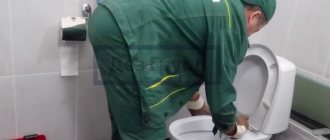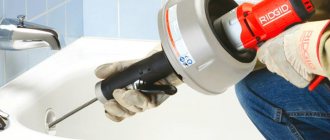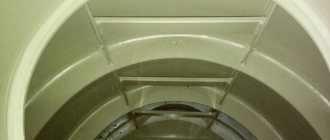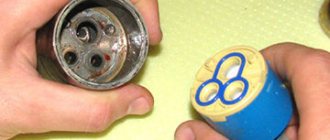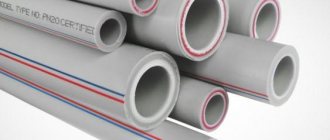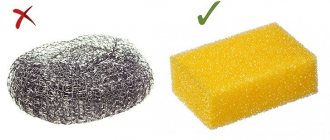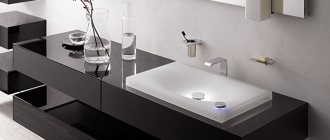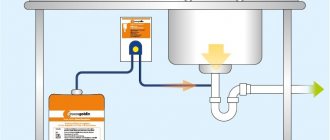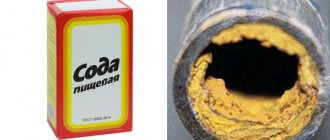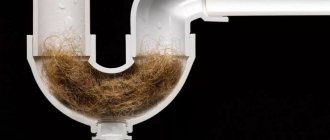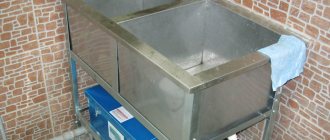Cleaning
Author:
Blockages in the bathroom sink often form because in this room hair constantly gets into the plumbing fixtures, which creates suitable conditions for the accumulation of contaminants. Such a plug is difficult to remove using improvised methods, so special tools and equipment are used. For effective removal, you need to know the intricacies of each method.
Sink clogs happen quite often.
- 1 Causes of blockages in the bathroom
- 2 Mechanical methods of breaking through blockages 2.1 Plunger
- 2.2 Cable
Causes of blockages in the bathroom
The formation of congestion is facilitated by violation of the rules for caring for plumbing fixtures. The drain hole must be cleared of accumulated hair every time after taking a shower. If this is not done, fat deposits form on them, and as a result, a plug quickly forms. Moreover, removing it using mechanical methods is problematic, because the hair becomes tangled and cannot be pulled out.
In addition, blockages in the bathroom are formed depending on the location of the swivel fittings or the condition of the internal walls. This is due to the movement of a small plug through the pipeline. There are local and general blockages. They form in different parts of the pipe.
To check what caused the obstruction of communications, you need to open the tap in the kitchen and bathroom. If water is difficult to drain in one of the rooms, it means that a plug has appeared in the sewer section of the apartment. If all plumbing fixtures are clogged when the taps are open, it means that debris has entered the riser.
Protecting drains from hair, threads and wool
Hello, dear readers and DIYers! In this article, Andrey, the author of the YouTube channel “Stroyhak”, will tell you how to simply protect the sewage system from hair and wool getting into it.
So, Andrey presents his homemade product that will help you prevent hair from getting into the drain. Yes, that very ubiquitous hair that somehow gets into your drain pipes and causes you a lot of problems.
At first they make it difficult to drain the water, and later they form blockages. The most important thing here is not to pull hair out of the drain, but rather to prevent it from getting there.
Materials.
- Nylon cable ties - PVC pipe, steel pin, or stick - Masking tape. Tools used by the author. — Construction hair dryer — Gas burner — Stationery or carpenter’s knife.
Manufacturing process. To do this, you will need nylon cable ties, which can be purchased at an electrical store or construction market. The author’s one tie is slightly thicker, 5 mm wide and 250 mm long. And the second is 3.5 mm wide and 300 mm long. Which one to choose is basically irrelevant.
Since Andrei was doing everything for the first time, naturally he made mistakes at the beginning. For example, to form locking rings, I twisted the ties immediately. Although this could have been done later.
The author's next mistake was using a hot blade to create hooks on the screed.
Firstly, the hot blade made them of poor quality.
The author first thought that he needed to take a thicker tie. But the wide tie also began to break after exposure to the hot blade.
The resulting tie had many thin hooks, and at the same time did not lose its strength and flexibility. This is exactly what you need.
As a result, the author came up with this Loch Ness monster, or centipede.
What the author said at the beginning - after a regular, not hot knife, the tie fastens freely, forming the desired stopper. Therefore, it is not necessary to close it from the very beginning. You only need to step back a few centimeters from the future locking eyelet; there is no need to make a notch on it.
As you can see, the ties do not fall into the sewer, but they spring back if you press on them. And at the same time, they are recessed, and therefore do not interfere with the person using the bathroom.
The author loads the prepared materials directly into the water.
Good mood, good luck, and interesting ideas to everyone!
Source
Mechanical methods of breaking through blockages
First of all, the funds of this group are used. They are characterized by low/moderate efficiency, which depends on the location of the plug in the pipe. Applicable:
- plunger;
- cable.
You can get rid of the blockage using a cable.
The devices have a simple design and small dimensions. They are easy to use. The cost of such tools is minimal when compared with special equipment.
plunger
This option is the simplest of the entire arsenal of tools available for use at home. A plunger can be used to remove surface blockages. The device will cope with contamination provided that the plug has formed near the drain. To remove blockages at a significant distance from the plumbing fixture, a cable is used.
If the plug appears in the bathtub, where an overflow is always provided, then during the cleaning process you need to close it with a second plunger or other device that will ensure a tight fit of the plumbing fixture to the walls. If this is not done, the effectiveness of the tool will be significantly reduced and the plug will remain in place. If 2 plungers are used for drain and overflow, a vacuum is created in the pipe section between the holes.
Instructions for removing clogs:
- The rubber bowl is installed over the hole.
- If there is an overflow, it is also closed.
- You need to pour water into the bathtub/sink (depending on where the pipe is clogged), if by the time of cleaning it has gradually leaked out.
- Holding the tool by the wooden handle, make reciprocating movements. Thanks to the vacuum formed inside, it becomes possible to move the plug. Once dislodged, it can be easily removed, as contaminants move towards the drain.
Cable
This tool removes debris that is stuck at a distance of up to 10 m from the plumbing fixture. There are different types of cables:
- classic version: a plumbing cable equipped with a flattened handle on one side and a spiral on the other;
- cable brush, it is distinguished from its analogues by the presence of a device like a brush;
- a tool for cleaning pipes with a diameter of up to 50 mm - it is distinguished by a significant expansion at the end, which allows you to effectively remove contaminants;
- a manual cleaning spinner, it is slightly different in design: it is equipped with an electric drive and is characterized by small dimensions.
To clear the blockage, you need to insert a cable into the drain. It is pushed through the pipeline until the free end hits the plug. Then they begin to alternately perform rotational and reciprocating movements. As a result, debris clings to the spring at the end of the cable. When the tool is removed from the pipe, the plug also comes out.
The cable itself is smooth. The attachments on the end can be changed. They differ in shape and size. The disadvantage of this method is the need to dismantle the siphon. If, when designing the sewer system, special fittings were installed to facilitate pipeline maintenance, you do not need to disassemble this unit.
The advantages of this cleaning method include the ability to break the plug. The desired result is achieved thanks to the mechanical effect on the blockage: when performing reciprocating and rotational movements, the blockage is gradually destroyed - it breaks up into parts that can freely move further along with the water.
Folk remedies for dealing with blockages
To clean a sewer pipe, use improvised means that have an aggressive effect on organic contaminants. Substances in this group cannot dissolve synthetic waste. The advantage of this method is considered to be ease of implementation, since in most cases the necessary funds are available in the house. In addition, their use is environmentally friendly: no toxic substances are released during use, and no harmful effect on humans is observed.
The disadvantage of the method is considered to be low efficiency. If a pipe is clogged, folk remedies will not be able to remove severe contamination. The most effective options:
Lemon juice is used for mild stains.
- Vinegar + soda. The components are taken in equal quantities, and it is important to use no more than 1 glass of each of them in one go. First of all, you need to remove the water from the sink/bathtub. If this is not done, the product will not help, because when using it, the chemical reaction between the components is considered the most important. First, pour soda into the drain, then immediately pour in vinegar. To enhance the properties of such a mixture, the hole is tightly closed. After 3 hours, you need to clean the drain using hot water. This will remove any remaining chemicals and contaminants.
- Lemon juice. This option is not strong enough to eliminate the manifestations of complex congestion. For this reason, it is used when mild contamination appears, for example, if water does not leave the drain for a long time, but its slow movement through the pipeline is observed. You need to pour the fresh juice of 3 lemons into the hole of the bathtub or sink. The product is left for 1 hour, after which the sewer system is washed with running water.
- Boiling water. This option is only suitable if the jam is caused by organic contaminants, such as fatty components. Under the influence of high temperature, the fat dissolves, the cork is destroyed partially or completely - it all depends on what kind of debris it contains. In terms of implementation, this option is simpler than other methods: you just need to open the hot water tap and wait for the pipe to clear.
- A solution of soda and salt. In terms of effectiveness, this option is not inferior to methods based on the use of lemon juice or hot water. Mix 500 g of soda and 200 g of salt. You need to prepare a solution, for which the components are diluted with water (1 liter) and boiled. Water is removed from the plumbing fixture, then the finished product is poured into the hole. The solution must be hot. The drain is closed to improve the result. After 2 hours, the substance is washed out of the pipeline with hot water.
- Caustic soda is also a good tool for cleaning pipes; it works more effectively than the considered analogues. It is not recommended to use the substance in dry form. A solution is prepared on its basis: 200 g of caustic soda, 1 liter of boiling water. The product is poured into the hole in the sink/tub. After 2 hours, the pipeline must be flushed.
A solution of caustic soda with boiling water is poured into the sink hole, then after 2 hours you can rinse the water supply.
Common causes of blockage
Clearing a clog using a plumbing cable
From time to time, hair, clumps of wool, pellets from clothes, and small debris get into the pipes. All this combines into a large lump that clogs the drain and prevents the passage of water.
Clogging also occurs under the influence of fatty deposits, which promote the adhesion of household contaminants.
If this happened in an apartment, then you need to determine whether there are problems with the sewer line or in the riser. In case of local blockages, you can eliminate them yourself, but in the second case you cannot do without a team of plumbers.
Several methods are used to clean pipes:
- thermal - resort to boiling water;
- chemical - corrosive drugs are used;
- mechanical - open the siphon cup or use a plumbing cable;
- carry out pressure cleaning using a plunger.
If the choice fell on the thermal method, then you first need to find out whether the pipes can withstand high temperatures.
Household chemicals
This method of clearing drain plugs is considered universal. With its help you can remove any kind of pollution, including synthetic debris. However, chemicals are characterized by a high level of aggressiveness. They should not be allowed to come into contact with the skin or mucous membranes. Substances in this group are available in powder or liquid form. The first option is used together with a small amount of water. First, a chemical is poured into the drain, then a lukewarm liquid is poured. The exact proportions are reported by the manufacturer.
The advantages of such products are their low price and ease of cleaning the pipeline: no physical effort is required. You don't have to wait long for the substance to take effect. In most cases, the congestion is eliminated after 30 minutes, and its remains do not have to be removed, since the contaminants are completely dissolved. When using such products, it is necessary to ensure protection of the skin and mucous membranes, so you should work with gloves. It is not advisable for chemicals to come into contact with chrome surfaces.
This method can be used to clean metal and polymer pipes. However, when choosing, you need to take into account the type of active components. The manufacturer indicates for which communications the product is intended. If these recommendations are not followed, the pipeline may fail, since the chemicals are highly aggressive. Moreover, this method can be used infrequently - if such a need arises, once a month, but preferably less often (once every 2-3 months). After use, the substance must be thoroughly washed off the inner surface of the pipe.
Hydrodynamic method
The basis of this method is to ensure the possibility of supplying water directly to the plug, which impedes outflow. Moreover, the intensity of fluid movement should be high. Simply opening the tap to clean the inside of the pipeline will not help solve the problem of regular blockages. Special equipment is used. For this reason, it will not be possible to use this method independently at home.
Another feature of this option is the supply of hot water, with its temperature reaching +120°C. As a result, the liquid turns into steam, which is supplied under high pressure. Considering the complexity and relatively high cost of implementing the method, it is used to remove the most complex blockages that cannot be cleaned by other methods.
Causes of congestion
Clogged sewer system drains are deposits of organic and inorganic substances on the walls of the pipeline. The accumulation of sewage occurs for various reasons:
- The pipeline was laid in violation of technology. A slight slope of horizontal pipe sections slows down the movement of wastewater. When a large amount of water is discharged into the sewer system at one time, the pipeline does not cope with the task. Most often this leads to a malfunction of the sewer system.
- Pipes have a rough inner surface. Roughness of the internal surface traps small inclusions contained in the waste liquid. As a result of layering on each other, deposits form and the internal diameter decreases. A small gap makes it difficult for water to flow out, and the wastewater disposal system fails.
How to clean a siphon
You need to prepare for the work: spread a rag on the floor to absorb drops of water. The main liquid from the sink is drained into a bucket immediately after dismantling the siphon.
Cleaning the siphon.
Instructions for performing the work:
- Unscrew the plastic locking nut on the pipe under the plumbing fixture. This allows you to remove the siphon flask. It is important to hold this unit so that the water contained inside does not spill onto the floor.
- Clean the pipe on which the siphon is held, as well as the flask itself, since large debris accumulates in it.
- The dismantled structural elements are put back in place.
Preventing blockages
It is recommended to replace communications. This will prevent the formation of traffic jams in the future, since contaminants quickly accumulate inside old pipes whose walls are uneven. A mesh is installed on the drain hole. It will prevent clogging of communications, as it will trap large contaminants. The mesh is cleaned as hair accumulates in it.
In addition, when installing new pipes, it is necessary to check whether the slope is maintained (1-2 cm per meter). This allows you to speed up the flow of contaminated water through the pipes. For prevention, you should also not throw large debris into the drain hole. Even if a mesh is installed, particles will enter the pipeline. Communications should be cleaned periodically using chemicals. This will eliminate the risk of jamming. In the future, you will not have to deal with cleaning the sewer system.
Similar articles
Proven methods for cleaning acrylic surfaces from various contaminants
Rules for cleaning and caring for bathroom faucets
How to clean tiles from grout and glue
How to eliminate odor from a drain
A persistent and unpleasant sewer smell in the bathroom indicates clogged pipes and bacterial growth. The reason for their appearance lies in the violation of the integrity of the sealing rings, cracks in the pipes and siphon, its clogging, and evaporation of liquid from the water seal. To destroy such “odors”, it is necessary to eliminate the defects described, clean the siphon or blockage in the pipes.
This diagram shows the location of the water seal, which protects the room from unpleasant odors.
You can get rid of an unpleasant smell in the bathroom using chemicals and traditional methods.
Method one:
- Pour 150 g of mustard powder into the drain hole.
- Pour hot water into it.
Method two:
- Pour chlorine solution into the bathtub drain hole, protecting your hands with gloves in advance.
- After 10 minutes, rinse the system with clean water.
